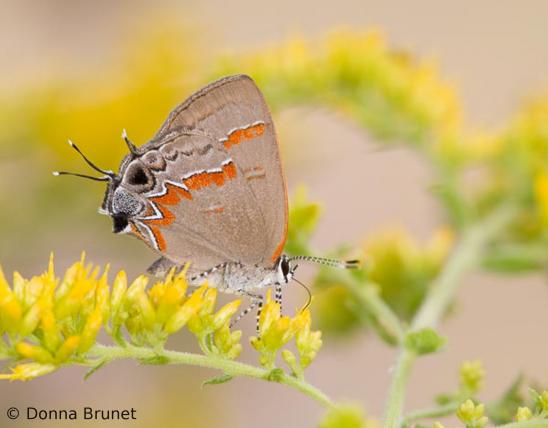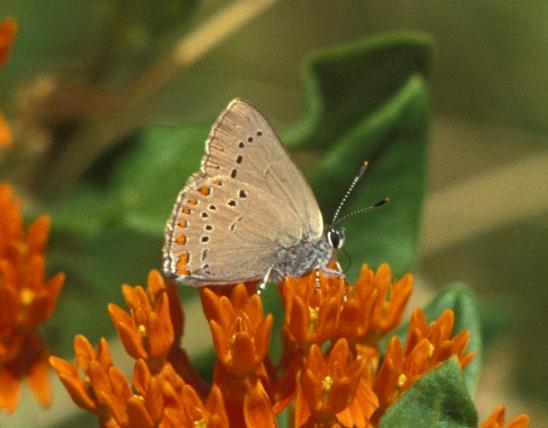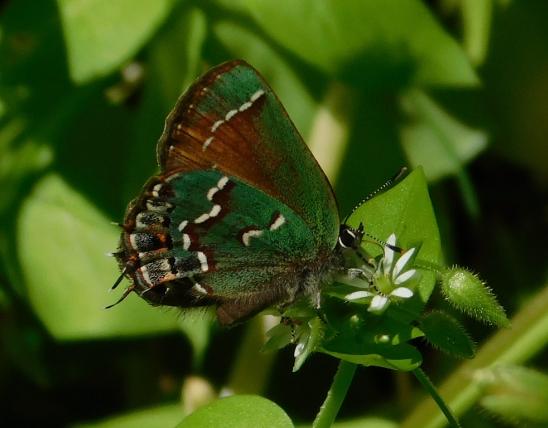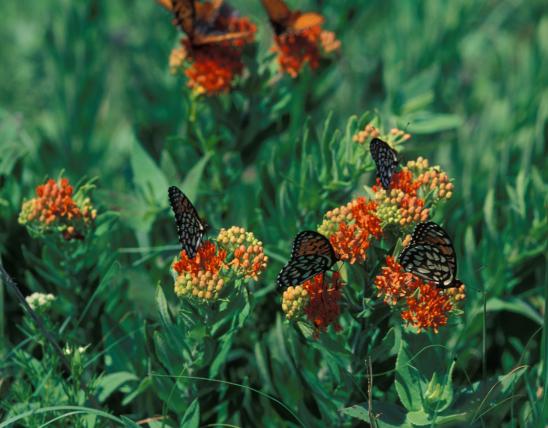
Adult gray hairstreaks are pale gray below; the large orange spot by the tail is square and bordered with a black line on the basal side. The narrow “hairstreaks” (technically postmedian bands) are white, black, and orange; the hindwing between the base and the postmedian bands is unmarked. There is 1 tail on the hindwing. The top of the head is orange, and males have a hint of orange on the abdomen. Wings are dark gray above with an orange arch or crescent on the trailing edge of the hindwing.
Larvae are covered with short hairs and are green to grayish or reddish brown with yellow or white oblique (slanted) stripes on the sides.
Wingspan: 1–1½ inches.

Statewide.
Habitat and Conservation
Found in almost any open habitat, including residential areas and weedy, disturbed lands.
Food
This species uses more host plants than any other North American butterfly. Caterpillars eat flowers and fruits from more than 20 plant families, but they most often select plants in the bean or pea family (Fabaceae) and the mallow family (Malvaceae). As the caterpillars mature, they may start eating leaves. The adults are avid flower visitors.
Status
Common breeding species.
Life Cycle
Adults fly from the second half of March into November. There are three or more broods. The timing of the broods is not fixed or uniform; this is probably due to different growth rates of the many different host plants used by gray hairstreaks. Males perch on trees and shrubs during the afternoon until dusk, awaiting females. From year to year, males select the same trees as perches. This species overwinters in the chrysalis stage.
Human Connections
Gardeners: Have you ever found little greenish caterpillars eating the center out of your green beans? The larvae of gray hairstreaks can be pests on crops in the bean and mallow families, including beans and cotton. For the damage they can do to bean pods and developing cotton bolls, the caterpillars have been named “cotton square borers.” Their damage can be economically important.
Ecosystem Connections
The caterpillars are herbivores that graze on flowers and fruits.
The adults, as they probe flowers for nectar, aid in pollinating many species of mints, milkweeds, goldenrods, dogbanes, and clovers.
All stages of this insect provide food for predators.
Ants are sometimes seen with the caterpillars, harvesting a sugary liquid from the caterpillars' hind ends. The ants probably protect the caterpillars from many potential small predators.





































